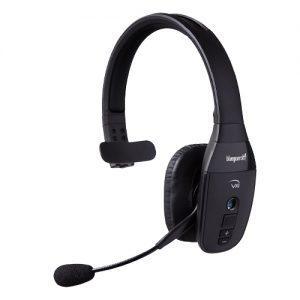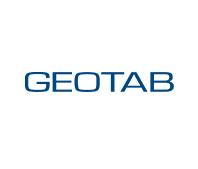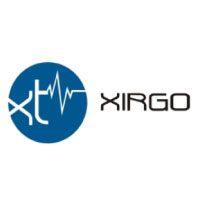
When strategizing for your business’s future objectives, how much of a role do the needs of your customers play? If you neglect the ever-changing priorities of your client base, your business could fall behind in the marketplace and lose out on important new revenue.
Since your customers’ needs are constantly evolving, it’s imperative to get ahead by collecting feedback and testing your new business ideas. Here are several essential steps you can take to put your customers first and create some new strategies to solve their problems more effectively.
Sending surveys and incentivizing clients to complete them.
Collecting information about your clients’ experiences and additional needs is easier to do by sending out post-service surveys. Using questionnaires like these, you can get valuable information about where your services can be improved, as well as what new options or preferences customers would like to have available to them. Incentivizing your customers with rewards when they fill out surveys helps collect even more feedback, and in turn, deliver value to them.
Setting up surveys in a standard format with radio buttons or multiple-choice options can make analyzing results easier. Rather than sifting through paragraphs of individually written feedback, identifying what the most selected options are is a much more efficient method. Eliminating manual entry from your surveys also helps your clients feel less intimidated when they are providing feedback.
Studying feedback for trends.
Once you’ve received feedback from your customers, it’s imperative to look for similarities. Are there any common themes within the collected information, or trends indicating that clients want to see particular services more than others?
Identifying patterns in your business (both good and bad), as well as customers’ preferences, helps further optimize your workflows and steer the direction of new products and initiatives. For example, if you’re running a plumbing company, exploring whether HVAC services would be a worthwhile addition to your portfolio of services can be done by polling your clients and weighing the additional costs versus the new potential revenue it could generate. Keeping a read on the pulse of the marketplace (and your clients’ needs) should ultimately help you decide whether or not to pursue a new business strategy.
Testing new products or services based off feedback.
Piloting a new product or an extension to your existing services (based off customer insights) can serve as the first step to testing a new revenue stream’s potential. Trying new products or services on a smaller scale can help you decide if it’s eventually something you want to roll out across your entire business plan (or abandon altogether).
Comparing the new strategy’s generated profit to what your customer feedback initially indicated is a good way to confirm that things are working. With a constant fine-tuning of the most effective products and services and the debut of new ideas for your customers to enjoy, you can establish your company as a pioneer in its industry and increase profitability.
Measuring revenue results and product data.
Judging the consumer response to your newest strategy or product and gauging whether further interest is likely to follow can be accomplished with revenue analytics. Testing new products and services and the impact they have on your bottom line provides indirect indicators of how your customers feel about the new strategies your business rolls out.
If response and initial sales are strong, consider offering the new product or service addition full-time. Conversely, as interest in seasonal promotions or offerings with shorter shelf-lives declines, remove these from your product/service collection, so you’re only putting the most impactful solutions in front of your customers.
Adjust future business strategies as needed.
Continuing to pursue objectives that are proving to be more successful than others empowers you to focus more on generating additional revenue. Letting customers’ feedback guide where your strategies go into the future is a smart way to gain direction and formulate effective plans.
With a constant process of information collection, analysis, and strategizing, your business is put in a better position to succeed. Addressing new problems your customers face with researched and effective strategies helps your company remain adaptable as the future of your industry unfolds.
For all other aspects of your organization’s processes, rely on TeamWherx® to help collect data and craft new, more efficient operational strategies. By using our solution to work smarter and provide better service to customers, you can support new initiatives and revolutionize how your company does business.
Share this post:
About the author : Andrew Forest
Drew Forest is a writer, marketer, and content creator. He enjoys traveling, fantasy football, and watching Tampa Bay sports teams win championships.

















 Encore & Geotab Drive
Encore & Geotab Drive



























 Gain even greater insight into the daily activities of your fleet using the combination of Geotab and Actsoft. Geotab devices provide detailed data collection and seamless integration with our solutions; learn more about the ways your vehicles are being used daily with the power of this tandem.
Gain even greater insight into the daily activities of your fleet using the combination of Geotab and Actsoft. Geotab devices provide detailed data collection and seamless integration with our solutions; learn more about the ways your vehicles are being used daily with the power of this tandem.



 Actsoft partnered with Odin to provide our solutions overseas, through payment processing integrations. Odin helps us support user management for our software; customers can also purchase our products through Odin’s billing platform.
Actsoft partnered with Odin to provide our solutions overseas, through payment processing integrations. Odin helps us support user management for our software; customers can also purchase our products through Odin’s billing platform.

 VisTracks powers our Electronic Logging Device (ELD) solution, which enables transportation businesses to easily automate their hours of service logs, remain in governmental compliance, and reduce their potential to incur costly fines.
VisTracks powers our Electronic Logging Device (ELD) solution, which enables transportation businesses to easily automate their hours of service logs, remain in governmental compliance, and reduce their potential to incur costly fines. Integration between Actsoft solutions and BeWhere’s software products is available. Take your team’s asset tracking, cellular data connectivity, and field insight a step further with effective, cross-application compatibility.
Integration between Actsoft solutions and BeWhere’s software products is available. Take your team’s asset tracking, cellular data connectivity, and field insight a step further with effective, cross-application compatibility.
 CalAmp tracking devices for vehicles and assets alike are compatible with Actsoft solutions, making it easy for you to efficiently monitor your equipment and fleet cars. Help your team enhance accountability, safety, and savings through a combination of easily installed hardware and intuitive software.
CalAmp tracking devices for vehicles and assets alike are compatible with Actsoft solutions, making it easy for you to efficiently monitor your equipment and fleet cars. Help your team enhance accountability, safety, and savings through a combination of easily installed hardware and intuitive software. Our partnership with Uniden is ideal for companies looking to gain advanced diagnostics on their fleets. Uniden’s extensive product listing of car electronics like radios, dash cams, radar detectors, and in-vehicle communicators work in concert with Actsoft’s solutions to better connect your vehicles to the company headquarters.
Our partnership with Uniden is ideal for companies looking to gain advanced diagnostics on their fleets. Uniden’s extensive product listing of car electronics like radios, dash cams, radar detectors, and in-vehicle communicators work in concert with Actsoft’s solutions to better connect your vehicles to the company headquarters. Kyocera offers a wide range of mobile devices, ranging in design from traditional phones to ultra-durable handset technology. Actsoft is able to equip organizations in a variety of different industries with solutions for improved business, while Kyocera supplies the technology they can flawlessly operate on.
Kyocera offers a wide range of mobile devices, ranging in design from traditional phones to ultra-durable handset technology. Actsoft is able to equip organizations in a variety of different industries with solutions for improved business, while Kyocera supplies the technology they can flawlessly operate on.

 Our software is the perfect complement to Apple’s user-friendly technology. Equip your workforce with the devices and solutions it needs for optimized productivity during daily operations with Apple and Actsoft.
Our software is the perfect complement to Apple’s user-friendly technology. Equip your workforce with the devices and solutions it needs for optimized productivity during daily operations with Apple and Actsoft.
 Actsoft and Sanyo teamed up to merge intuitive business management software with the technology of today. This partnership allows us to provide you with all the tools your team needs for improved workflows, better coordination, and optimized productivity.
Actsoft and Sanyo teamed up to merge intuitive business management software with the technology of today. This partnership allows us to provide you with all the tools your team needs for improved workflows, better coordination, and optimized productivity. Motorola’s mobile technology works in tandem with our solutions to provide extra versatility to your business practices. Coupled with our software’s features, Motorola’s reliable devices make connecting your workforce simpler than ever to do.
Motorola’s mobile technology works in tandem with our solutions to provide extra versatility to your business practices. Coupled with our software’s features, Motorola’s reliable devices make connecting your workforce simpler than ever to do. We’re able to bundle certain solutions of ours (including our Electronic Visit Verification options) with Samsung devices to help your team achieve as much functionality as possible, while keeping rates affordable. Use these combinations for accurate recordkeeping, improved communication, and smarter data collection in the field.
We’re able to bundle certain solutions of ours (including our Electronic Visit Verification options) with Samsung devices to help your team achieve as much functionality as possible, while keeping rates affordable. Use these combinations for accurate recordkeeping, improved communication, and smarter data collection in the field.